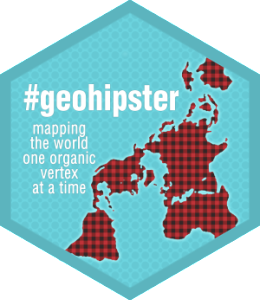
Q: Tell us about yourself
A: I’ve loved maps for my entire life and have been drawing and making maps since my childhood. Currently I live in Richmond, VA. I work for the Office of Intermodal Planning and Investment where I do my best to make a positive contribution to Virginia’s transportation plan (VTrans) using my background in GIS and data management.
Q: Tell us the story behind your map
A: In 1864, as the American Civil War was entering its final months and the Union army was closing in on Petersburg and Richmond, the US Coast Survey Office produced a map of Richmond, Virginia, presumably commissioned in support of the Union Army’s ongoing siege, showing the streets and major landmarks of the city. One hundred fifty years later in 2014, the US Geological Survey mapped the same area using lidar to evaluate the damage from Hurricane Sandy. My map combines these two datasets allowing you to see how the city has physically evolved over the past century and a half.
You can easily see how much has remained the same over the years in the basic layout of the streets. The fact that the 19th century map is able to be georeferenced so accurately to the lidar data is a testament to the skill of the surveyors who created the original map. Mayo’s Bridge, the oldest in the city, is clearly visible in both datasets even though it’s been rebuilt a couple times in the interim. Some of the buildings that survived the war are visible in the lidar dataset (in fact I used the Capitol building and the Masonic Hall as control points while georeferencing the 19th century map). The ruins of the Petersburg railrod bridge are clearly visible as periodic squares in the lidar data next to the line in the 19th century map. The most notable change is the removal of the canal system and the additional bridges that were built in the 20th century, as well as the Interstates and the Downtown Expressway that carve their way through the city.
Not as easily seen in the map is the cultural change the city has seen over the course of a century and a half. Before the Civil War, Richmond had the second largest slave market in North America. The St Charles Hotel in the eastern side of the map was known for hosting auctions in the basement. By 2014 there was a growing movement to recognize the city’s dark past, often hidden from the history books, and to remove the massive “lost cause” monuments scattered throughout the city that glorified the Confederacy.
Q: Tell us about the tools, data, etc you used to make the map
A: The 19th century basemap was acquired from the Library of Congress’ map collection. Taking a look at that map by itself is interesting (you can view it at the Library of Congress website), but I decided to try georeferencing it in order to compare it to modern GIS data. I relied on buildings and intersections that have survived since the mid-1800s as control points. I was amazed by how well the map matched up to modern imagery.
The 21st century lidar data was from the USGS National Map. I used WhiteBox Tool’s Python interface to visualize the data using the Time In Sunlight tool. Finally, I combined the two datasets in GIMP image editing software.

